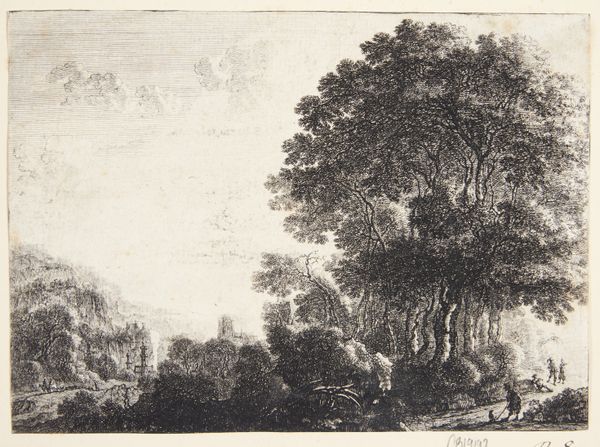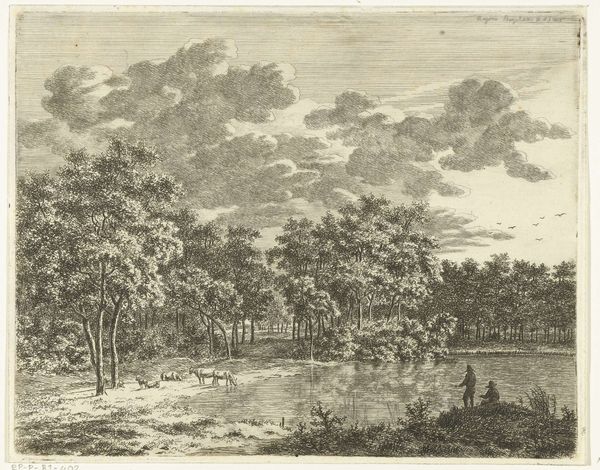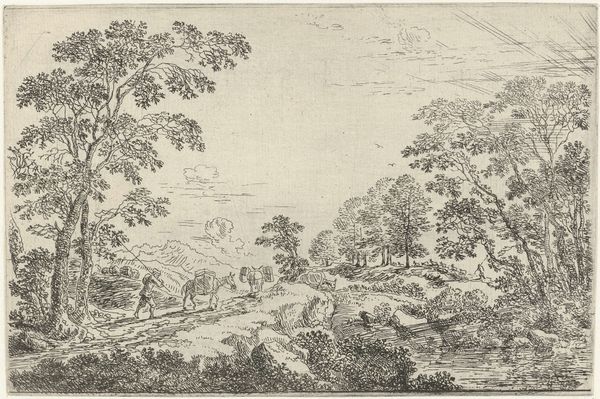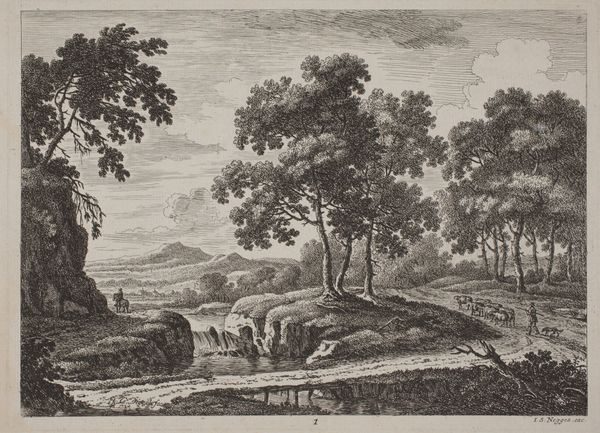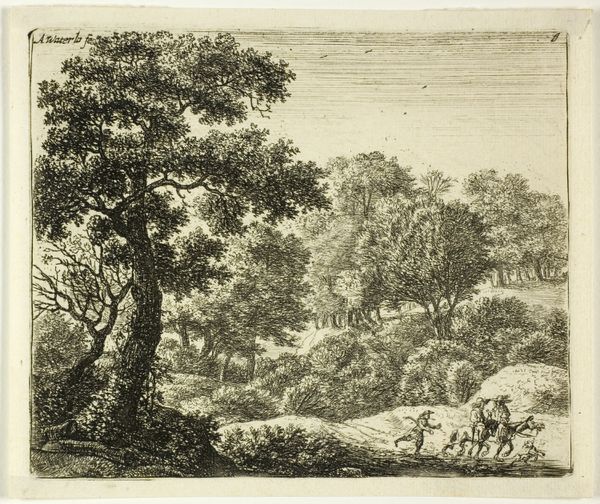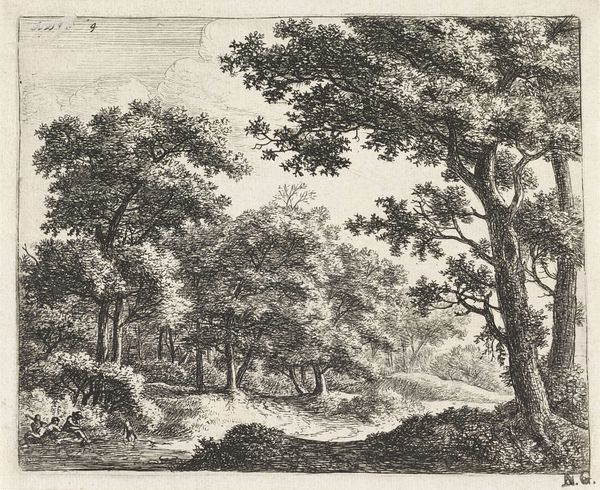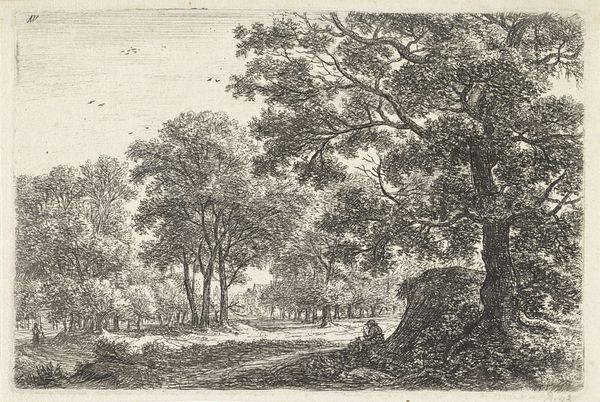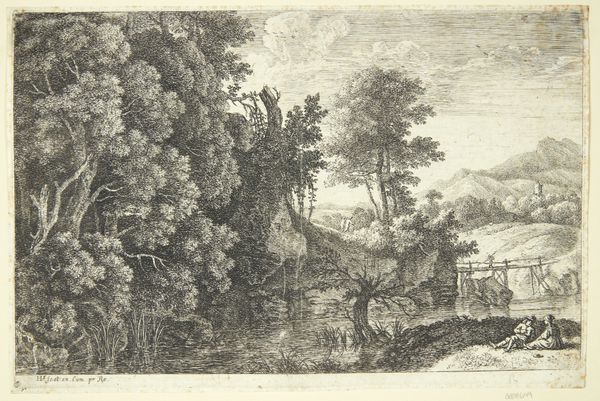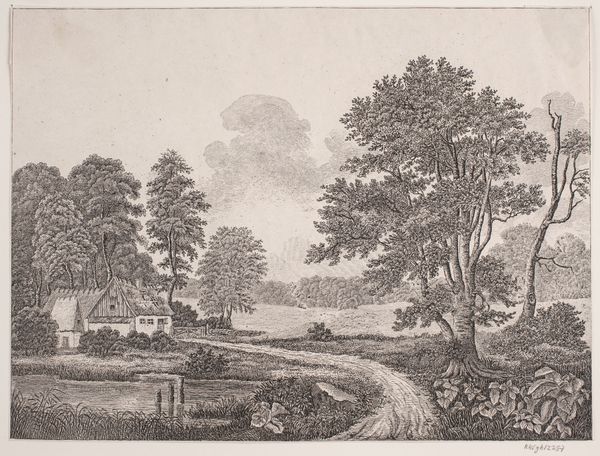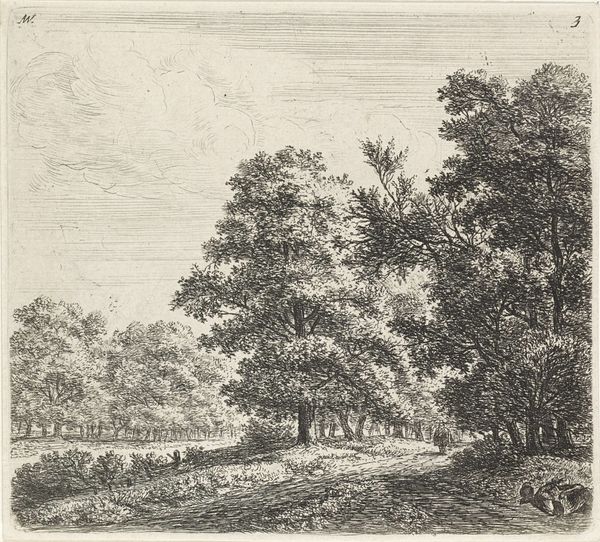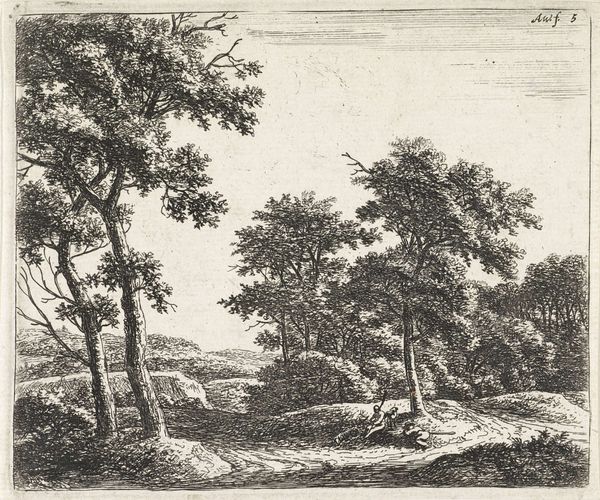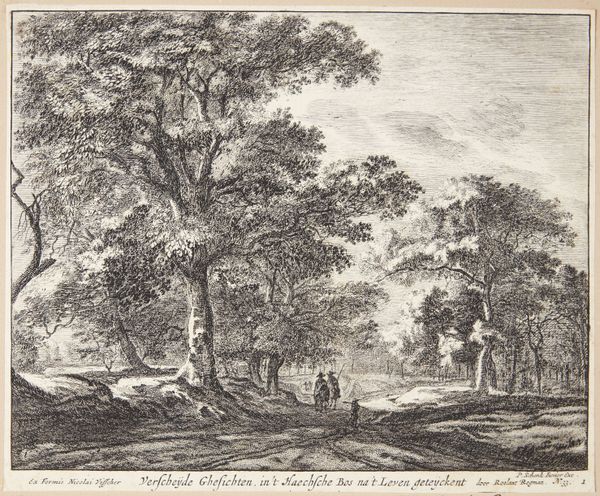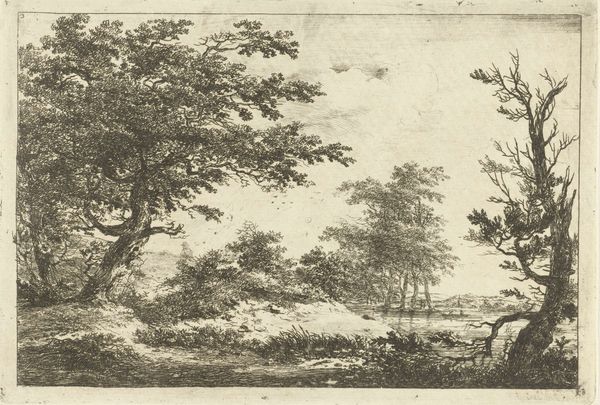
print, etching
#
baroque
#
dutch-golden-age
# print
#
etching
#
landscape
Dimensions: 127 mm (height) x 177 mm (width) (bladmaal)
Curator: Immediately, I'm drawn to the contrast. There's this serene, almost idyllic landscape rendered in stark black and white—it creates a quiet tension. Editor: Yes, it possesses an almost dreamlike quality. This etching, titled "Landskab med en rytter og en vandrer" (Landscape with a Rider and a Wanderer), dates to between 1618 and 1686 and is attributed to Gillis Neyts. Curator: The detail is remarkable, especially given it's an etching. Notice the texture of the leaves, the delicate hatching that defines the sky… it’s a masterclass in line work. How does a relatively common, unremarkable countryside scene such as this serve its contemporary audience? Editor: Landscapes of this period, particularly in the Dutch Golden Age, played a vital role in shaping national identity. They were more than just pretty scenes. Such landscape pieces spoke to Dutch resilience, pride in their land reclaimed from the sea, and prosperity. While landscapes served to document the environment, what formal attributes, as you see it, characterize the visual experience in Neyts’ etching? Curator: Formally, the composition guides your eye deep into the scene. The large tree on the right acts as an anchor, and then the waterway, bridge, and figures on the road creates the space; each has an even share of compositional emphasis that produces equilibrium and depth, especially with a horizon punctuated by the faint spires of some village church. Editor: It certainly adheres to the conventions of landscape art in the era—reflecting socio-economic and cultural values onto idealized vistas. What kind of a political context allowed such landscape artwork to be produced at the time? Curator: One can consider this serene landscape is only made possible and marketable within the political freedom the Netherlands gained upon separation from Habsburg Spain through war, a liberty that had just been won within that context. But regardless of that, look at the balance the light produces! The way it gives form and space to the objects… Editor: You're absolutely right. I came in thinking the subject would be more aligned with bucolic bliss, but there are darker undertones present—aspects of labor and land ownership become impossible to ignore in this setting. Curator: Which speaks to the inherent power of close examination; we peel back the layers of both history and the material aspects.
Comments
No comments
Be the first to comment and join the conversation on the ultimate creative platform.
